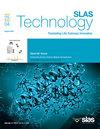Leveraging FastViT based knowledge distillation with EfficientNet-B0 for diabetic retinopathy severity classification
IF 3.7
4区 医学
Q3 BIOCHEMICAL RESEARCH METHODS
引用次数: 0
Abstract
Diabetic retinopathy (DR) remains a key contributor to eye impairment worldwide, requiring the development of efficient and accurate deep learning models for automated diagnosis. This study presents FastEffNet, a novel framework that leverages transformer-based knowledge distillation (KD) to enhance DR severity classification while reducing computational complexity. The proposed approach employs FastViT-MA26 as the teacher model and EfficientNet-B0 as the student model, striking the ideal mix between accuracy and computational efficiency. APTOS blindness detection dataset comprising 3662 images across five severity classes is collected, pre-processed, normalized, split and augmented to address class imbalance. The teacher model undergoes training and validation before transferring its knowledge to the student model, enabling the latter to approximate the teacher’s performance while maintaining a lightweight architecture. To comprehensively assess the efficacy of the proposed framework, additional student models—including HGNet, ResNet50, MobileNetV3, and DeiT—are analysed for comparative assessment. Model interpretability is enhanced through Grad-CAM++ visualizations, which highlight critical retinal regions influencing DR severity classification. Several measures are used to evaluate performance, including accuracy, precision, recall, F1-score, Cohen’s Kappa Score (CKS), Weighted Kappa Score (WKS), and Matthews Correlation Coefficient (MCC), ensuring a robust assessment. Among all student models, EfficientNet-B0 achieves the highest classification accuracy of 95.39 %, 95.43 % precision, recall of 95.39 %, F1-score of 95.37 %, CKS of 0.94, WKS of 0.97, MCC of 0.94, AUC of 0.99, and a KD loss of 0.17, with a computational cost of 0.38 G FLOPs. These results demonstrate its effectiveness as an optimized lightweight model for DR detection. The findings emphasize the potential of KD-based lightweight models in attaining high diagnostic accuracy while reducing computational complexity, paving the way for scalable and cost-effective DR screening solutions.
利用基于FastViT的知识蒸馏与EfficientNet-B0进行糖尿病视网膜病变严重程度分类
糖尿病视网膜病变(DR)仍然是全球眼部损伤的主要原因,需要开发高效、准确的深度学习模型来进行自动诊断。本研究提出了一种新的框架fastffnet,它利用基于变压器的知识蒸馏(KD)来增强灾难严重性分类,同时降低计算复杂度。所提出的方法采用FastViT-MA26作为教师模型,采用EfficientNet-B0作为学生模型,在准确性和计算效率之间实现了理想的结合。APTOS盲检测数据集包含5个严重级别的3662张图像,通过预处理、归一化、分割和增强来解决类别不平衡问题。教师模型在将其知识传递给学生模型之前要经过培训和验证,使后者能够在保持轻量级体系结构的同时近似教师的表现。为了全面评估拟议框架的有效性,对其他学生模型(包括HGNet、ResNet50、MobileNetV3和deit)进行了分析,以进行比较评估。通过Grad-CAM++可视化增强了模型的可解释性,突出了影响DR严重程度分类的关键视网膜区域。用于评估性能的几个指标,包括准确性、精密度、召回率、f1分数、科恩Kappa分数(CKS)、加权Kappa分数(WKS)和马修斯相关系数(MCC),以确保可靠的评估。在所有学生模型中,effentnet - b0的分类准确率最高,为95.39%,准确率为95.43%,召回率为95.39%,f1评分为95.37%,CKS为0.94,WKS为0.97,MCC为0.94,AUC为0.99,KD损失为0.17,计算成本为0.38 G FLOPs。这些结果证明了它作为一种优化的轻量级DR检测模型的有效性。研究结果强调了基于kd的轻量级模型在实现高诊断准确性的同时降低计算复杂性的潜力,为可扩展和具有成本效益的DR筛选解决方案铺平了道路。
本文章由计算机程序翻译,如有差异,请以英文原文为准。
求助全文
约1分钟内获得全文
求助全文
来源期刊

SLAS Technology
Computer Science-Computer Science Applications
CiteScore
6.30
自引率
7.40%
发文量
47
审稿时长
106 days
期刊介绍:
SLAS Technology emphasizes scientific and technical advances that enable and improve life sciences research and development; drug-delivery; diagnostics; biomedical and molecular imaging; and personalized and precision medicine. This includes high-throughput and other laboratory automation technologies; micro/nanotechnologies; analytical, separation and quantitative techniques; synthetic chemistry and biology; informatics (data analysis, statistics, bio, genomic and chemoinformatics); and more.
 求助内容:
求助内容: 应助结果提醒方式:
应助结果提醒方式:


